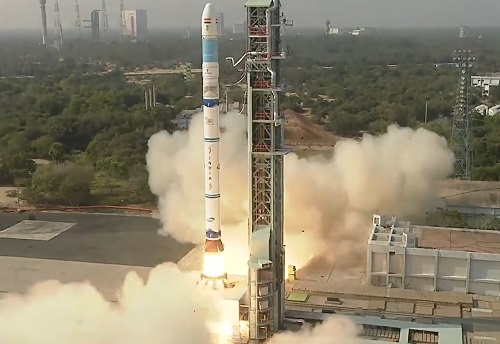
AICRAFT’s Pulsar is a super-fast edge computing module.
South Australian artificial intelligence company AICRAFT has successfully launched its edge computing module into orbit, with which it hopes to set a record for big data processing.
The device, only 95mm x 90mm x 25mm in size, was launched on 10 February 2023 aboard the JANUS-1 satellite belonging to Antaris Space.
The launch took place from the Satish Dhawan Space Centre of India under a commercial arrangement with NewSpace India Limited (NSIL), the commercial arm of the Indian Space Research Organisation (ISRO).
As a key sub-system of the JANUS-1 satellite, AICRAFT’s edge computing module, named Pulsar, will perform ultra-fast processing of space data using artificial intelligence at lowest power consumption.
Pulsar was designed and manufactured in Australia and is the only Australian payload on the JANUS-1 mission.

The Pulsar module was launched on 10 February 2023.
In its preliminary tests on the ground, the company demonstrated the module’s ability to classify 1,250 Earth observation images in about 10 seconds.
This was achieved using the device in low-power mode, which the company expects will enable 24/7 computation — even on ‘shoe-box-size’ nanosatellites — compared to the 10 minutes per day with current market solutions.
Pulsar can toggle between low-power and high-performance modes, which can give a further four times speedup of its low-power processing.
The module is highly customisable depending on the host satellite, mission duration and orbit, which, the company says, makes it affordable for a variety of customers.
Pulsar supports more than 20 of the most popular machine learning frameworks, with users able to develop algorithms in the same way as they do on desktops, leveraging from open-source software.

SmartSat CRC Director Andy Koronios (left) congratulates AICRAFT’s Dr Tony Scoleri on the successful launch.
“Getting to this point was a phenomenal journey for us. The JANUS-1 mission gave us the focus to build an advanced and space-grade AI technology in a very short time (9 months) and provided a springboard for AICRAFT to enter the space ecosystem,” said CEO of AICRAFT, Dr Tony Scoleri.
“The collaboration with the US-based Antaris Space commenced through their Australian subsidiary company which is also a member of the Aurora Space Cluster, an initiative of SmartSat CRC for start-ups, and enabled [us] to combine forces.”
Development of the host JANUS-1 satellite involved eight organisations spanning seven countries collaborating virtually through Antaris’ cloud-based platform, which features open APIs and core open-source elements.
AICRAFT and Antaris signed a memorandum of understanding at the Australian Space Forum in Adelaide in March 2022.
“This is an exciting flight for us, and we are already in conversation with potential customers for our next mission,” said Dr Scoleri.







